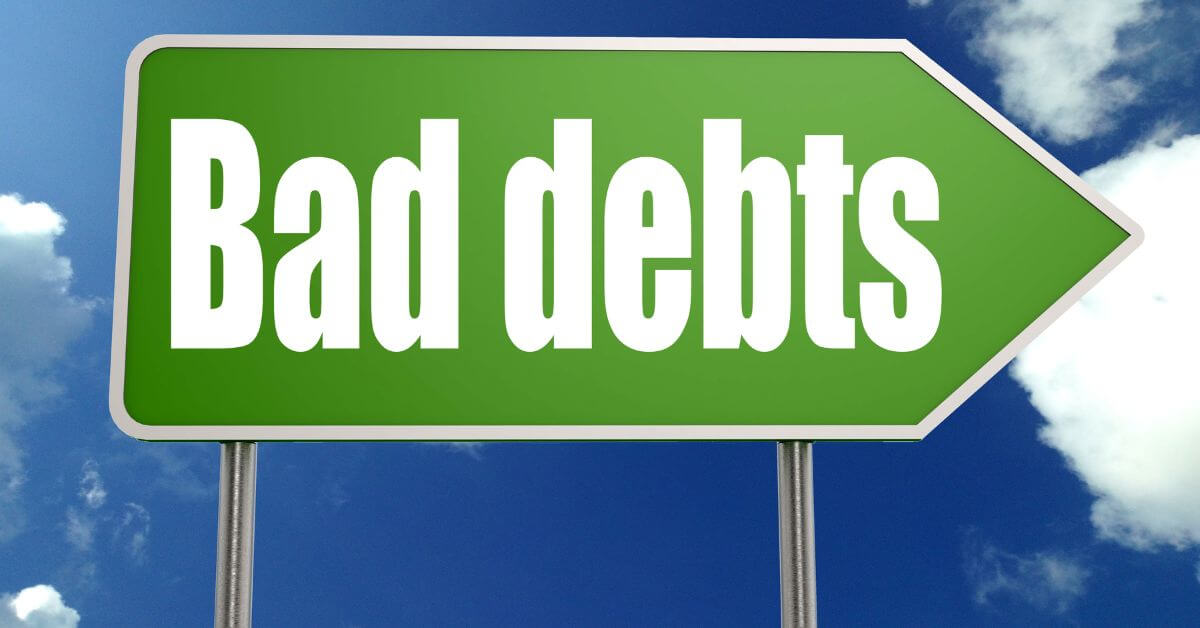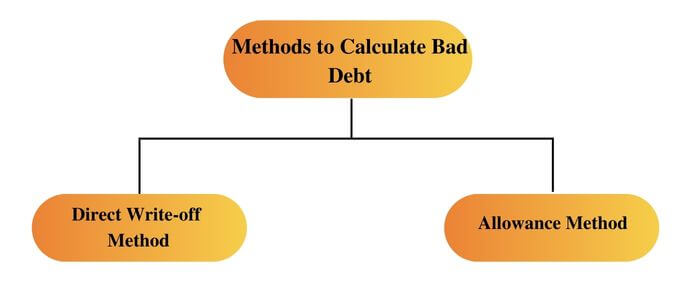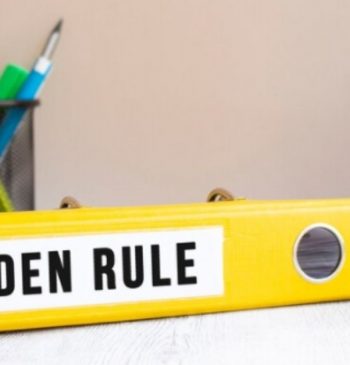25 Aug

When companies sale their goods and services to customers, account receivables created as a result but there is always a risk that they won’t pay them back. We refer to this debt as a ”Bad Debt”. This happens when the customer cannot pay back the debt or is unwilling to do so. This article will explain bad debts’ meaning, causes, methods, and journal entries.
What is a Bad Debt?
Bad debt is irrecoverable money owed to a company or individual who cannot repay what they owe. Bad debt is not necessarily a loan but rather any financial obligation where the borrower does not have enough assets to refund the amount owed. Therefore, bad debt may be considered a loss on a business transaction.
The term “bad debt” is often used interchangeably with “uncollectable debt.” However, these terms are not synonymous. Uncollectable debt is those debts that are unlikely ever to be paid back. On the other hand, bad debt refers to debts that are likely to be repaid but for which the debtor cannot pay at the time of collection.
Why Do Bad Debts Happen?
There are many reasons why a customer may default on a payment. They could be unable to pay or simply not want to do so. Some people will only pay when a company demands it, but others may be insolvent and cannot afford to make their bills. In addition, certain types of debtors (such as bankruptcies) also make it more difficult for companies to collect on bad debts to avoid being sued by creditors who owed money by these individuals or companies that have been defrauded by those same individuals or companies in the past.
Methods to Calculate Bad Debts
There are two methods to calculate bad debts.

Direct write-off method
The direct write-off method is a method of recognizing bad debts. In this method bad debts are directly write off to account receivable at the time of bad debts been occured. In short, the businesses debit the ”Bad Debts Expense account” and credit ”Accounts Receivable” under this technique.
This method violates the matching principle of accrual accounting because, the expense is recorded several days or months after after you recorded the related revenue. In addition, these principals state that the expense should be recorded when the transaction occurs rather than when payment is made.
Allowance method
The allowance method of bad debt calculates how much money should be set aside to cover losses. When company made sales, an estimated amount of account receivables is charge to bad debts expense account and credit is given to allowance for doubtful accounts. In short, when actual bad debts occur and the company wants to write off this account, then allowance for doubtful accounts is debited and account receivables is credited. Moreover, the allowance technique offers the advantage of the matching principle. However, it means that bad debts are added to expense account in the period when the revenues are recognized rather than when payment is made.
What Is The Journal Entry For Bad Debt?
A bad debt journal entry records the acquisition of a customer’s account. You can record this transaction by entering it into your general ledger. Accounting treatment for bad debt according to accrual principle will be as follow:
Bad debt expense | Debit |
Receivable account | Credit |
The receivable balance should be written off when it is decided that an account cannot be collected. Therefore, journal entries will be as follow;
Allowance for doubtful account | Debit |
Account Receivables | Credit |
Conclusion
In short, bad debt is an unpaid invoice that needs to be recorded in your accounting system. You can record it in multiple ways and at different levels of detail, depending on your needs and preferences. There are many methods for recording bad debts. However, we have reviewed the two popular methods. Direct write-off method, and allowance method. Each of these methods has its advantages and disadvantages, therefore, make sure to research them before deciding which technique would work best for you!
Content writer at Invyce.com
Related Post
Copyright © 2024 – Powered by uConnect



Meena Khan